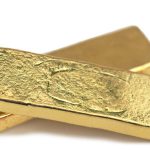Platinum is an extraordinary metal that has been a frequent topic on this blog. Its unique characteristics make it a critical resource within various industries, including the medical industry, where it’s used in medical devices like pacemakers and catheters. Platinum is also used in many technology applications, such as in hard disk drives, making it crucial for the modern era. Its lustrous appearance also makes it a favorite in jewelry and manufacturing.
Being in high global demand, platinum makes for a valuable asset to invest in or sell. Its rarity combined with practical uses contributes to its prestigious status. Investing in platinum and other precious metals can be an excellent hedge against inflation and a way to diversify an investment portfolio.
You may be interested in learning how to find and recycle any spare platinum. Luckily, there’s plenty of it to go around. In this post, we’ll cover some of the best places that can prove useful for finding platinum scrap.
#1: Jewelry Factories & Workshops
Jewelry factories and workshops are rich grounds for platinum scrap. As platinum is malleable and durable, it’s a preferred metal for high-quality jewelry. In the process of creating or repairing jewelry, scraps are left behind in various forms such as floor dust, bench sweepings, and squiggles. These seemingly insignificant leftovers can accumulate to a valuable quantity.
We advise our clients not to discard any dust or powder in their workshops, as it may be more valuable than you think. Finding platinum in broken jewelry is easier yet. Silver-looking jewelry marked with a “pt” indicates with certainty that it’s made from platinum.
#2: Lab Equipment
In scientific laboratories, platinum’s unparalleled properties make it an ideal material for equipment like crucibles, tweezers, forceps, and triangular metal stands. Its heat resistance and inert nature allow it to remain stable even in aggressive chemical environments.
Though over time, platinum lab equipment may lose its original shine, become discolored, or even deformed, it’s essential to remember that the platinum content remains unchanged. Even in these states, it can be refined and recycled, retaining its inherent value. Old lab tools and instruments are not merely junk but potentially valuable platinum resources.
#3: Thermocouple Wires
Thermocouples, although not widely known, are vital components in various industrial applications. These thin wires, often made of platinum, are used to monitor or remotely measure temperatures in manufacturing processes, including everything from stoves to air conditioning systems.
The use of platinum in thermocouples is due to its high melting point and stability at extreme temperatures. If you come across wires marked with “pt,” it’s likely they contain platinum. Knowing where these thermocouples are used and how to identify them could lead you to a steady source of platinum scrap.
#4: Catalytic Converters
Catalytic converters are intriguing for scrap collectors due to their platinum content, combined with rhodium and palladium. These devices reduce harmful emissions in automobiles, and their theft has become a common crime.
For those involved in auto repairs or having access to junk cars, catalytic converters can be a legitimate source of income. With values up to $200 each, this can turn into a lucrative side business. However, the emphasis must always be on legally acquiring these converters, as the unlawful possession of such devices carries severe legal penalties.
#5: Dental Laboratories and Clinics
Dental laboratories and clinics are surprisingly rich sources of palladium scrap. Palladium is often used in dental crowns, bridges, and other prosthetics due to its biocompatibility and resistance to corrosion. If you can establish a connection with dental professionals who are willing to part with old dental appliances or tools, you may discover a consistent supply of platinum.
Retired dentists or dental clinics going through renovations might also dispose of old equipment containing platinum. Collaboration with these sources, in line with proper legal channels, can lead to a mutually beneficial arrangement, converting unwanted dental materials into valuable platinum scrap.
#6: Aerospace and Aviation Industries
The aerospace and aviation industries are another unexpected but promising source of platinum. Due to its heat resistance and strength, platinum is used in aircraft engine components and other critical aerospace applications. Maintenance and refurbishment of aircraft may lead to the replacement of these platinum-containing parts.
#7: Industrial Processing Plants
Industrial processing plants, especially those involved in chemical, petroleum, or food processing, may use platinum in various applications like catalysts, coatings, and specialized machinery. These plants undergo regular maintenance, upgrades, and replacements, leading to potential platinum scrap.
Engaging with industrial processing facilities may uncover opportunities to collect or purchase platinum-containing equipment, machinery, or consumables. Familiarity with the particular industry’s processes and regulations is crucial for accessing these materials, but the potential for platinum recovery is substantial.
Reeling In the Platinum
Although it is a precious metal, it is not impossible to find platinum if you know where to look. Take note of the resources you have access to and see if you can find a good source of platinum.











